Kids thrive on exploration and learning, and STEM boxes provide an exciting avenue for hands-on experience in science, technology, engineering, and mathematics. When you introduce a STEM box into your child’s routine, you not only ignite their curiosity but also enhance their problem-solving skills. Each kit is packed with engaging activities that encourage creativity and critical thinking while keeping the fun alive. As your child experiments and builds, they’re laying a strong foundation for future academic and career success. Let’s probe the world of STEM boxes and discover how they can benefit your little ones!
Key Takeaways:
- STEM boxes provide hands-on learning experiences that engage children in science, technology, engineering, and mathematics through interactive projects.
- These kits often include all necessary materials and instructions, making it easy for kids to explore complex concepts in a fun and approachable way.
- STEM boxes encourage critical thinking and problem-solving skills, fostering creativity and innovation in young minds while promoting a love for learning.
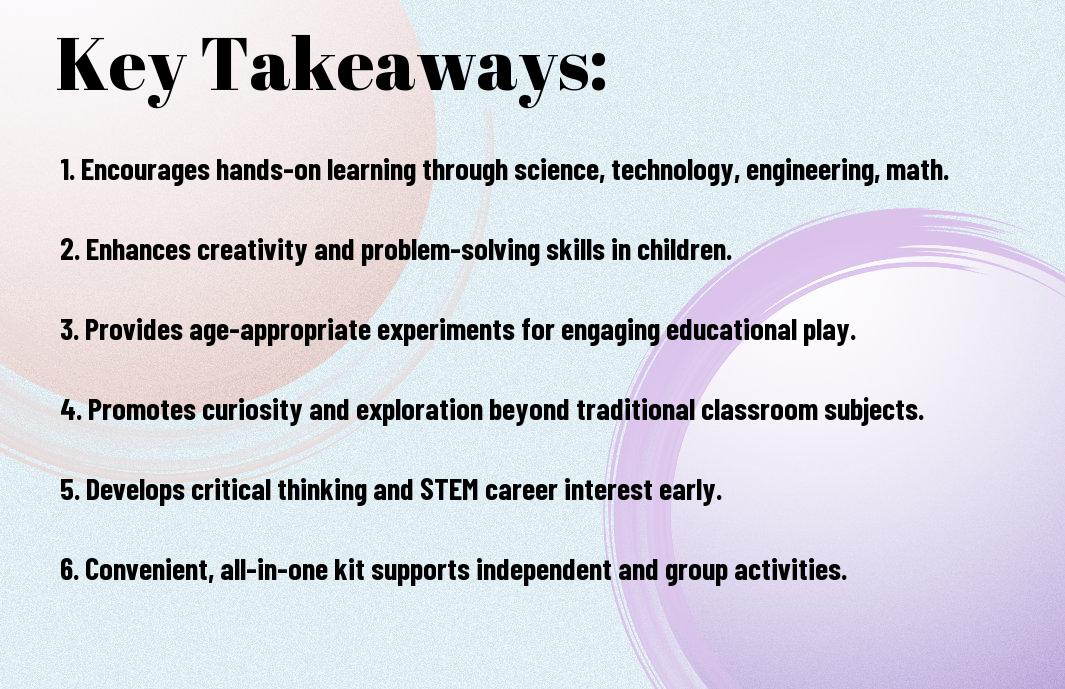
The Power of Play: How STEM Boxes Ignite Curiosity
Fostering a Lifelong Love for Learning
Engaging with STEM boxes stimulates your child’s interest in science, technology, engineering, and math in a way that feels like play rather than a chore. As your young learner immerses themselves in experiments and projects, their curiosity blossoms, encouraging them to ask questions and seek out answers. This interactive approach not only provides instant gratification but also sows seeds for complex thinking. For example, when they build a model rocket, they are no longer just following instructions. Instead, they learn about aerodynamics, materials, and problem-solving—all while having fun. By fostering this sort of exploration, you equip your child with both knowledge and an adventurous outlook toward learning that lasts a lifetime.
Research shows that when children engage in play-based learning, their intrinsic motivation is heightened. Studies conducted by the National Academies of Sciences reveal that playful, hands-on experiences are linked to improved academic performance and retention of knowledge. Your child may remember the scientific principles behind their rocket launch because they lived it; it wasn’t just a concept discussed in a textbook. This experiential learning fosters a sense of autonomy, allowing them to develop critical thinking skills and a greater sense of responsibility in their learning journey. Such autonomy does wonders for self-confidence, leading to a deeper engagement with future topics.
Creating environments rich in STEM play cultivates an atmosphere of exploration where failure is embraced, and challenges are seen as opportunities. When children encounter obstacles in their projects, whether a circuit doesn’t light up or a bridge collapses, you can guide them to discover solutions rather than simply giving them the answers. This problem-solving process reinforces resilience and adaptability, giving your child the tools to tackle new challenges across all areas of life. Ultimately, these positive experiences with STEM not only ignite a passion for learning but also prepare them for the unpredictable world ahead.
The Role of Hands-On Exploration in Child Development
Through hands-on exploration, your child develops important cognitive and social skills while nourishing their innate curiosity. Activities found in STEM boxes often require collaboration, encouraging children to work together to solve problems. This social aspect helps improve communication and teamwork skills, making them adept at navigating interpersonal dynamics as they mature. For instance, while building a simple machine, your child learns how to articulate their thoughts, listen to others, and share responsibilities. These experiences not only fortify friendships but also lay the groundwork for effective collaboration in future academic and career settings.
Moreover, tactile learning experiences play a significant role in brain development. Neuroscience indicates that when children engage with materials, the sensory input they receive activates different areas of the brain, enriching neural pathways and enhancing memory retention. Imagine your child mixing chemicals in a STEM box experiment; the vivid colors, fizzy reactions, and variable temperatures create memorable sensory experiences that anchor the lessons learned. Such sensory engagement also spurs creativity, inviting imaginative thinking that is important to innovation. The result? A well-rounded mind adept at problem-solving and adaptable to various challenges throughout life.
Hands-on exploration acts as a bridge between theoretical concepts and real-world applications. When your child assembles a robot or conducts a simple science experiment, they tangibly connect to the principles learned in school. This experiential link serves to deepen understanding and retention. For example, if your child builds a bridge with different materials, they grasp the engineering principles at play in architecture and construction. These moments of discovery make learning an adventure, helping your child build a strong foundation for future endeavors.
Unpacking the Components: What Makes a Great STEM Box?
Essential Tools and Materials for Engaging Experiments
Your STEM box should be a treasure chest of important tools and materials that facilitate hands-on learning and experimentation. Quality items such as building blocks, circuit kits, and measurement tools allow for a variety of projects that can engage your child’s creativity while enhancing their understanding of fundamental concepts. For example, incorporating programmable circuit boards can introduce your kids to the basics of electronics while fostering problem-solving skills through challenges that require critical thinking. Exploring different materials like clay, magnets, and craft supplies can encourage imaginative construction and dynamic engineering projects, making the learning experience tactile and enjoyable.
In crafting a well-rounded STEM box, consider the balance of project-based kits and free exploration materials. A project-based kit might include a simple robot-building set or a chemistry experiment, while free exploration materials allow for open-ended creativity where your child can design their own experiments. Such a dual approach not only nurtures structured learning but also lets them engage in innovative play. Don’t overlook the value of including safety gear as well; goggles and gloves ensure a safe environment, allowing your child to freely explore and learn without hesitation.
Lastly, including clear instructions will make a significant difference. While the allure of experimentation is that it can sometimes be chaotic, structured guidance helps you and your child examine new concepts confidently. Instruction sheets can provide interesting facts about the science behind the projects, making the experience enriching and educational. To take your STEM exploration to the next level, check out resources like the NextMaker: STEM Subscription Box for Kids … – Makeblock, where you can discover a variety of options that suit different age groups and interests, promoting curiosity and engagement with science and technology.
The Importance of Diverse Subjects: From Robotics to Biology
Embracing a variety of subjects within your STEM box paves the way for a more holistic educational experience. Each discipline, whether it’s engineering, biology, or computer science, brings unique perspectives and enhances critical thinking skills. By introducing your child to robotics, you not only teach them how machines work but also help them understand coding principles that can propel their future in technology. Meanwhile, incorporating biological experiments like planting seeds or observing insects introduces them to ecosystems and the vital connections found in nature.
Integrating diverse subjects nurtures a love for learning that transcends individual themes. By blending biology with technology – think projects that involve creating a robotic arm that mimics the movements of a limb – your child will understand the synergy between different fields. Each experiment does not exist in a vacuum; instead, they all connect and build upon one another, cultivating a sense of curiosity about how the world functions. With exposure to various subjects, your child becomes equipped to tackle real-world problems, combining knowledge from multiple disciplines to create innovative solutions.
Diversity in STEM learning ensures that your child develops a wide array of skills that are relevant in today’s job market. By experiencing projects in areas such as physics, chemistry, mathematics, and technology, they discover their interests and potential career paths early on. A dynamic STEM box can help spark those interests and team-building experiences that are important for developing social skills needed for collaboration and communication. Providing options across different scientific domains shapes adaptable learners who can navigate the complexities of our rapidly evolving world.
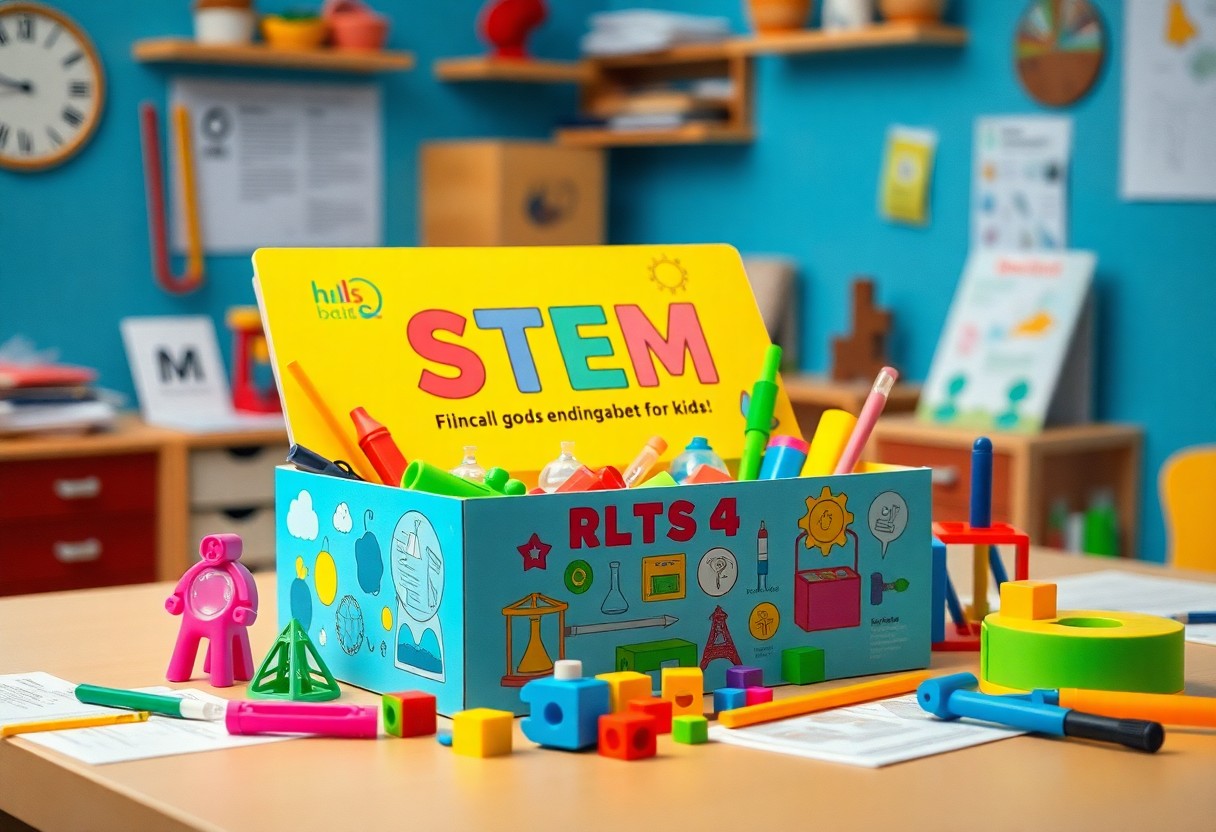
Real-World Applications: Bridging Theory and Practice
How STEM Boxes Prepare Kids for Future Careers
STEM boxes offer a practical way for kids to explore fields that are rapidly transforming the job market. By introducing necessary concepts in science, technology, engineering, and mathematics through hands-on activities, these boxes set the stage for future careers. For instance, a project involving simple robotics can spark an interest in engineering or computer science, and understanding coding basics can pave the way for a future in software development. Research indicates that engaging youth in STEM-related activities at a young age can significantly increase their chances of pursuing these fields; a report from the National Science Foundation claims STEM education initiatives can boost interest in high-tech careers by as much as 40% among students. Your child might not just play with the components but envision themselves as the innovators of tomorrow.
A tangible example of this is seen through programs that challenge children to design and complete projects that mimic real-world tasks. In a STEM box scenario, tasks could involve building a model solar panel system to understand renewable energy, giving them direct experience in addressing global energy issues. In the tech landscape, with an increasing demand for skilled workers, your child’s early exposure to these principles equips them with a competitive edge. Companies – especially those focusing on sustainability and tech – actively seek individuals who possess a solid foundation in these critical areas.
Ultimately, engaging with STEM boxes not only cultivates technical aptitude but also soft skills such as critical thinking, problem-solving, and creativity. The hands-on approach allows kids to experiment, fail, and learn from their mistakes, an necessary part of any career journey. These skills are integral for any future professional landscape since they empower your child to adapt to challenges in innovative ways. When your child interacts with these educational tools, they are participating in a formative experience that can influence their career choices and paths significantly.
Engaging with Real-World Challenges Through Project-Based Learning
Project-based learning (PBL) invites your child to tackle real-world challenges, encouraging an approach that fosters deep understanding and relevance in learning. Through STEM boxes, children aren’t merely completing isolated tasks; they are solving problems akin to those faced by scientists and engineers. Suppose the box includes a challenge to design a water filtration system – this exercise teaches not only the technical aspects of engineering but also raises awareness of global water issues. Engaging with such projects helps children connect their learning to broader societal needs. Statistics from the Buck Institute for Education indicate that students engaged in PBL retain information longer and develop better collaboration skills, enhancing their understanding of the material amidst real-world context.
Moreover, project-based learning encourages critical and creative thinking. As your child takes the lead in devising solutions, their ability to navigate complex problems is sharpened. For instance, in a scenario where they are tasked with creating an eco-friendly home model, kids must apply various STEM concepts, from environmental science to structural engineering. This multi-disciplinary approach not only enhances engagement but also prepares them to think outside the box, an important skill in today’s dynamic work environment. As research suggests, students who engage in such learning experiences are more likely to pursue careers in STEM fields because they find these subjects relevant and enjoyable.
By immersing your child in project-based learning through STEM boxes, you are nurturing problem-solvers equipped to handle real-world obstacles. Hands-on projects can be both fun and educational, and the skills acquired Will transition into their future endeavors, whether in the workplace or in daily life. The blend of creativity, collaboration, and technical knowledge will empower them to be leaders in their fields, ready to tackle the challenges of tomorrow.
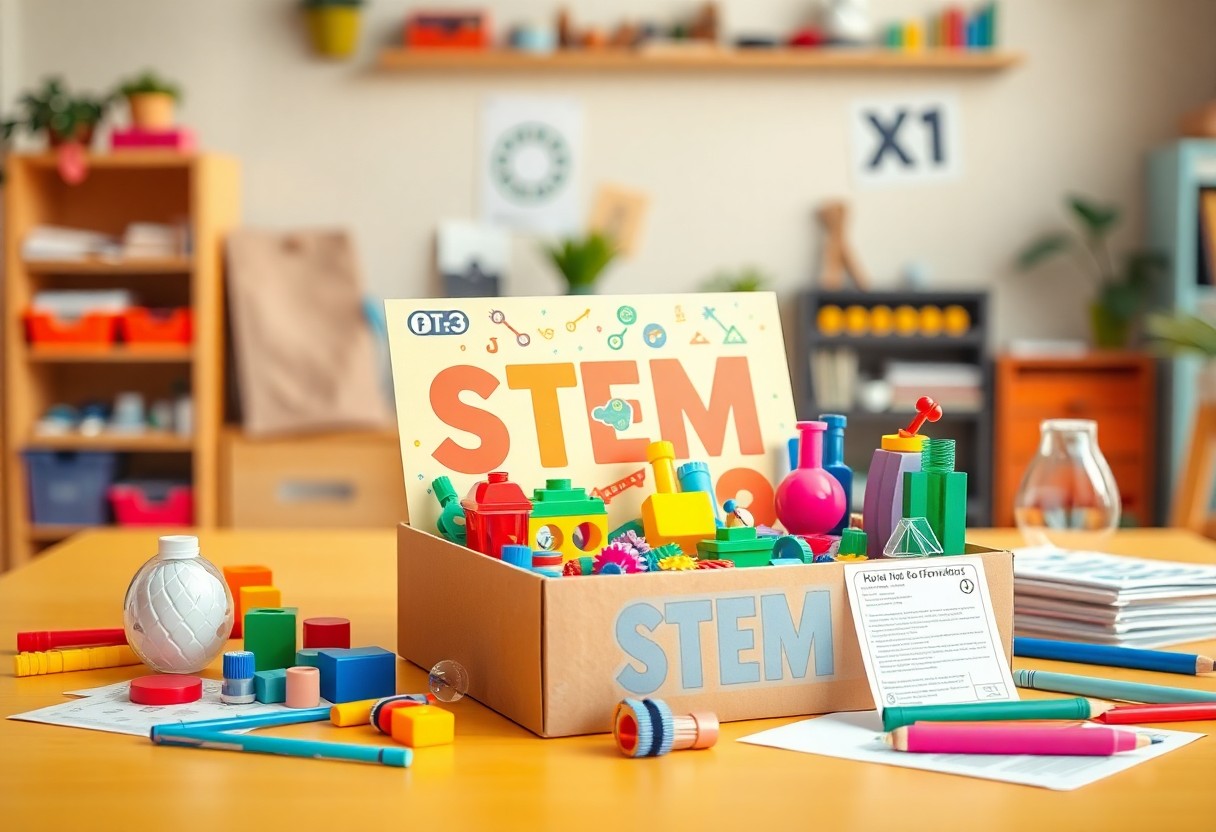
Tailoring STEM Experiences: Choosing the Right Box for Your Child
Age-Appropriateness and Skill Level Considerations
Selecting a STEM box that aligns with your child’s age and skill level can significantly impact their engagement and learning outcomes. Manufacturers often categorize their products by age range or skill level, giving you a starting point when looking for the right fit. For example, a box targeting 5 to 7-year-olds may focus on simple engineering concepts, using large building blocks to enhance fine motor skills. In contrast, a box designed for teens might challenge them with electronic components, coding tasks, or robotics. When you pick a STEM box that is too advanced, your child may become frustrated and lose interest. Choosing the right level ensures they experience manageable challenges that foster curiosity and confidence.
Skill levels vary widely among children even within the same age bracket, so it’s advisable to consider your child’s previous experiences with STEM subjects. If your little scientist has demonstrated an affinity for hands-on experimentation or problem-solving in school projects, a more advanced option may catalyze their interest. On the other hand, if their experience is limited, starting with an introductory box will create foundational skills before advancing. For instance, if you choose the Build Box Subscription by Mark Rober – Choose Your Plan!, you can benefit from a tiered approach, allowing them to progress over time as they master more complex concepts.
You should always keep an eye on the components included in the STEM box to ensure they are safe and suitable for your child’s age. This is especially relevant if you have younger children who are prone to putting things in their mouths. Boxes with small parts and intricate pieces are best reserved for older kids who can handle these challenges responsibly. A good STEM box should stimulate intellectual curiosity within a safe and enjoyable setting, balancing both educational experience and age-appropriateness effectively.
Aligning Interests with Educational Goals
Identifying your child’s interests can dramatically enhance the effectiveness of their learning through STEM boxes. If your child has a keen interest in space exploration, for example, look for kits focused on physics or astronomy. These not only reinforce their enthusiasm but also link their learning to concepts they are passionate about, making subjects feel more relevant and exciting. Fostering a passion is often more effective than enforcing instruction, as it keeps the learner engaged over the long term. Whether it’s chemistry, robotics, or coding, customizing the STEM box experience around their interests will create a more tailored educational adventure.
Additionally, aligning your child’s interests with broader educational goals deepens their understanding and application of STEM concepts. If your child’s favorite subject is biology, consider boxes that include experiments about ecosystems, plants, or human anatomy. This targeted selection can create a multifaceted learning experience, offering insights that broaden their knowledge while keeping the joy of discovery alive. You can even incorporate discussions around potential career paths, showing them how their interests connect to real-world applications. Imagine your child’s delight as they see the link between building a robot and careers in engineering or artificial intelligence!
This personalized approach allows you to cultivate a child’s natural curiosity while ensuring that the STEM boxes serve a greater educational purpose. You could follow their growth and interests through various activities to see how they develop skills in problem-solving, critical thinking, and creativity along the way. The well-chosen box can act as a stepping stone toward achieving educational milestones while keeping the fun factor high, enabling your child to turn science, technology, engineering, and mathematics into their playground of possibilities.
Community and Collaboration: The Social Aspect of STEM Learning
How STEM Boxes Encourage Teamwork and Communication
A significant aspect of learning through STEM boxes is the emphasis on collaboration. Many projects are designed to be completed in teams, which means that your child will need to communicate and coordinate with peers to achieve their goals. By working together on tasks, such as building a bridge or coding a simple game, kids learn to express their ideas and listen to others, enhancing their ability to articulate their thoughts clearly. Whether it’s brainstorming solutions to a design challenge or dividing up responsibilities on a group project, the practical experience gained from collaborating on STEM activities can lead to improved interpersonal skills. As your child learns to negotiate roles and responsibilities, they develop a sense of connection with their teammates, fostering valuable relationships based on shared experiences.
The real-world application of STEM concepts often requires several viewpoints and skills, making teamwork indispensable. For instance, in a robotics project, one child may excel in coding, while another might be more adept at mechanical assembly. By combining their strengths, they learn that different talents can contribute to a common goal, promoting an understanding that collaboration enriches outcomes and fosters innovation. This form of learning not only helps develop a richer understanding of scientific principles but also cultivates a sense of shared accomplishment. When projects are completed successfully, kids walk away with a sense of pride, knowing they contributed to a collective outcome.
As your child navigates challenges together with their peers, they also gain insights into conflict resolution and constructive criticism. Learning to accept feedback and make adjustments based on team discussions enhances their problem-solving skills. This form of interactive learning is foundational, as it prepares them for future academic and professional environments, where collaboration is often key to success. Such experiences underscore the significance of teamwork, making STEM boxes a powerful tool for nurturing future-ready skills in your child.
Leveraging Local Resources: Workshops and Events
Community workshops and events often accompany STEM box programs, extending learning beyond the confines of your home. Local libraries, science museums, and educational centers frequently host workshops where families can engage with hands-on STEM activities. These interactive environments not only serve as a platform for your child to apply their STEM box knowledge but also allow for networking with other like-minded families and peers. Such events provide a supportive setting where your child can explore their interests and develop skills while surrounded by a community of enthusiastic learners. Connecting with local educators can result in discovering fun and enriching opportunities tailored to young minds.
Typical workshops may include interactive science experiments, coding boot camps, or engineering challenges, all designed to encourage participation and inclusivity. At these events, your child can collaborate with others in real-time, giving them the chance to put their collaborative skills into practice. This in-person interaction fosters camaraderie and often leads to ongoing friendships with other children who share similar passions. In many cases, local businesses sponsor events, meaning your child can gain insights not only from educators but also from industry professionals, opening the door to potential career paths that might inspire them in ways STEM boxes alone cannot.
Consulting local resources can greatly enhance your child’s STEM journey. Many communities feature online calendars and social media groups that highlight upcoming workshops and events aimed at children. This accessibility can keep you informed about valuable activities, leading to an enriched learning experience. Ultimately, these community resources provide the growth opportunities needed to further stimulate your child’s interest in STEM while reinforcing the social benefits of teamwork and collaborative learning.
Final Words
Drawing together the intricate and multifaceted concepts of STEM education, you can see how a STEM box for kids empowers young minds to explore and develop necessary skills in science, technology, engineering, and mathematics. As a parent or educator, investing in a STEM box can open the door to experiential learning that transcends traditional teaching methods. By engaging in hands-on projects, your children not only grasp complex theories but also cultivate critical thinking and problem-solving abilities. These kits serve as a safe space for your kids to experiment, make mistakes, and learn from them, ultimately fostering resilience and curiosity, which are invaluable traits for any future career.
Moreover, a STEM box is not just about academic learning; it also promotes collaboration and communication among peers. When children work together on a project, they learn the importance of teamwork, sharing ideas, and appreciating diverse perspectives. As you encourage your child to invite friends or siblings to join in, you are instilling social skills that will benefit them throughout their lives. By providing an engaging and interactive environment, a STEM box becomes a catalyst for creativity and innovation, giving your child the confidence to voice their thoughts and explore their interests freely.
Ultimately, embracing the concept of a STEM box for kids means you are investing in your child’s future. The skills and knowledge gained through these hands-on experiences contribute significantly to their overall development and can set them on a path toward success in various fields. By nurturing a love for science, technology, engineering, and mathematics from an early age, you are preparing your child not only to excel in these areas but also to become adaptable and forward-thinking individuals who can tackle the complex challenges of tomorrow. So take the leap; let your child launch on this exciting journey of discovery and growth today.
FAQ
Q: What is a STEM box for kids?
A: A STEM box for kids is a curated package designed to engage children in activities related to Science, Technology, Engineering, and Mathematics (STEM). These boxes typically include hands-on projects, experiments, and educational materials that promote critical thinking and creativity. They can range from building kits and coding challenges to science experiments, helping kids learn complex concepts through interactive play.
Q: What age group is a STEM box suitable for?
A: STEM boxes are available for various age groups, typically ranging from preschool-aged children to pre-teens. The activities are often tailored to different developmental stages, ensuring that kids can engage with the material in a way that matches their skills and interests. It’s important to check the age recommendations provided by the manufacturer to find a box that best fits the child’s needs.
Q: How can a STEM box benefit my child’s education?
A: A STEM box can significantly enhance your child’s educational experience by fostering necessary skills such as problem-solving, analytical thinking, and creativity. Engaging with the interactive projects and experiments helps children apply theoretical knowledge in practical situations, making learning enjoyable and effective. Additionally, these boxes can inspire a lifelong interest in STEM fields, encouraging kids to explore further educational opportunities as they grow.

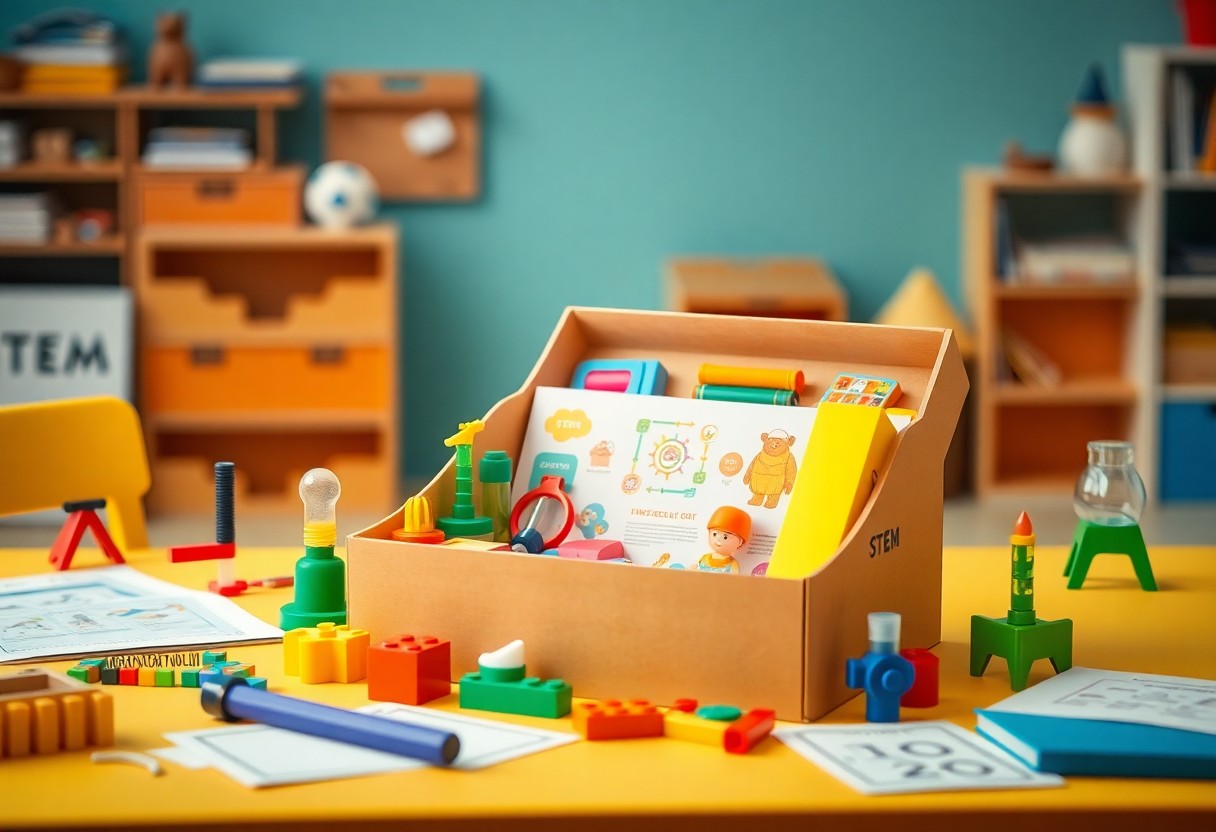
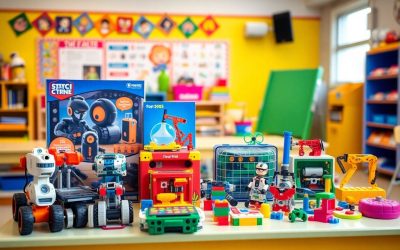
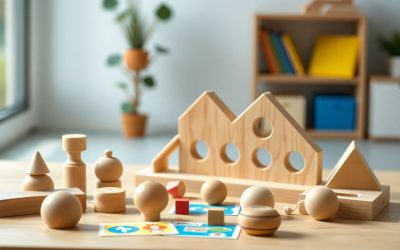
0 Comments